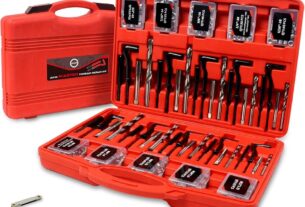Emergency Medical Technicians (EMTs) are the first responders who provide life-saving care to people in emergency situations. The EMT tool is an important piece of equipment that helps them perform their duties efficiently and effectively. In this article, we will discuss everything you need to know about the EMT tool, including its types, uses, and maintenance.
Types of EMT Tools
There are several types of EMT tools used by emergency medical technicians. These include:
1. Stethoscope – A stethoscope is a medical device used for listening to sounds produced by the body’s internal organs such as the heart and lungs. It is an essential tool for EMTs as it helps them diagnose various conditions such as heart and lung problems.
2. Blood Pressure Cuff – A blood pressure cuff is a device used to measure blood pressure levels. It consists of an inflatable cuff and a gauge for measuring pressure. EMTs use it to determine if a patient has high or low blood pressure.
3. Pulse Oximeter – A pulse oximeter is a small device that clips onto a patient’s finger to measure their oxygen saturation levels and pulse rate. It is particularly useful in emergencies where patients have difficulty breathing.
4. Glucometer – A glucometer is a device used to measure blood sugar levels in diabetics. EMTs use it to determine if a diabetic patient needs insulin or other medications.
5. Trauma Shears – Trauma shears are scissors specially designed for cutting through clothing and bandages quickly in emergency situations. They are useful for exposing wounds and injuries for treatment.
Uses of EMT Tools
EMT tools have numerous uses, some of which include:
1. Assessing Vital Signs – EMTs use tools like stethoscopes, blood pressure cuffs, and pulse oximeters to assess a patient’s vital signs such as heart rate, blood pressure, and oxygen saturation levels.
2. Diagnosing Medical Conditions – EMTs use various tools to diagnose medical conditions such as heart attacks, asthma attacks, and diabetic emergencies.
3. Administering Medications – EMTs carry medications such as epinephrine, aspirin, and nitroglycerin to help manage medical emergencies. They also use glucometers to determine if a diabetic patient needs insulin or other medications.
4. Wound Care – Trauma shears are useful for cutting through clothing and bandages quickly to expose wounds for treatment. EMTs also use bandages, gauze, and tape to stop bleeding and dress wounds.
Maintenance of EMT Tools
Proper maintenance of your EMT tools is essential to ensure that they function correctly during an emergency. Here are some tips for maintaining your EMT tools:
1. Clean Your Tools Regularly – Use a disinfectant solution to clean your tools after each use to prevent the spread of infections.
2. Replace Batteries When Needed – Make sure that you replace batteries in devices like pulse oximeters regularly.
3. Store Your Tools Appropriately – Keep your tools in a safe place where they won’t get damaged or lost.
4. Check Expiration Dates – Make sure that medications like epinephrine have not expired before using them.
Conclusion
EMT tools are essential equipment for emergency medical technicians who provide life-saving care in emergencies. In this article, we discussed the types, uses, and maintenance of EMT tools. By following proper maintenance procedures, you can ensure that your EMT tools function correctly when you need them most.
References:
https://www.emt-resources.com/essential-emt-tools/
https://www.jems.com/articles/print/volume-40/issue-7/features/essential-emergency-medical-equipment.html
https://www.healthline.com/health/emt-tools
https://en.wikipedia.org/wiki/Emergency_medical_technician




